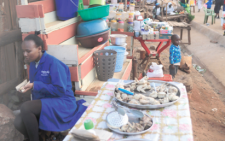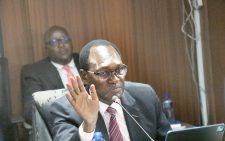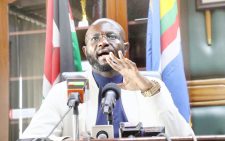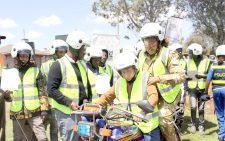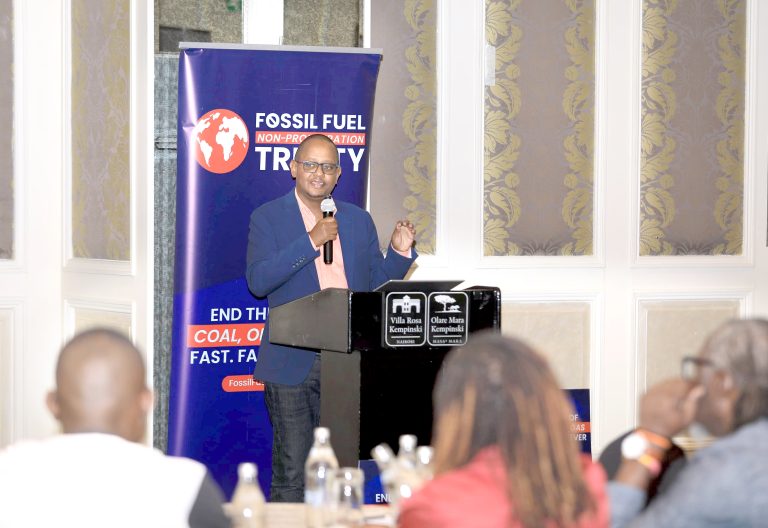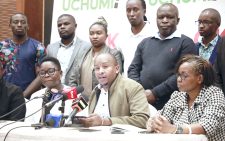Governors voice fear over refugees’ integration plan
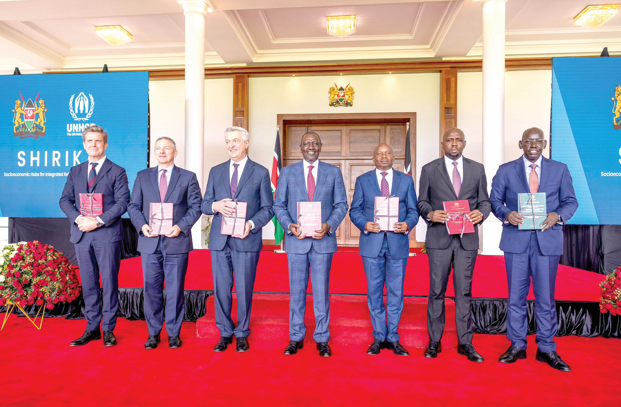
Governors from counties hosting refugees have raised concern over the government’s move to integrate them with locals under the Shirika Plan programme citing strained resources, environmental degradation and security implications.
Turkana Governor Jeremiah Lomorukai and his Garissa counterpart Nathif Jama urged the government to exercise caution when rolling out the programme, adding that the fears of the locals must be addressed.
“I think when we go ahead to implement the programme, there is a need actually for us to continue sensitising and also capacity building the people so that they understand the document properly. The governors and the other leaders are put in a very awkward situation to look like we are bringing a document that has other negative issues,” Lomorukai said.
Governor Jama told the government to clearly show how the host communities will be compensated under the programme after many years of sacrifice in accommodating the refugees.
Jama noted that Garissa County has held the largest number of refugees for the last 30-plus years and gave the example of the road between Garissa to Dadaab, a 100-kilometre stretch that was used by the World Food Programme to transport food to Dadaab, which has not had any meaningful attention.
“If that has not happened in the last 33 years, we hope and pray that now it will get some serious attention under this plan, so that the people and the host community can feel that the plan indeed is a way of mitigating that huge sacrifice,” the governor argued.
African solution
He also called on the government to address deforestation, particularly in the Dadaab and Hagardere camps, caused by the refugees cutting trees for firewood.
President William Ruto, while launching the Shirika Plan last week in State House, said the programme is a development-oriented model, anchored in sustainability, inclusion and resilience to uphold the safety and dignity of displaced persons.
“The Shirika Plan is our bold, home-grown solution which amplifies the African Union’s call for African solutions not only to Africa’s problems but also global challenges as well,” he said.
Acknowledging the tensions between the host community and refugees over access to health, education and social services, Ruto said that the government is focusing on harmonising the living conditions in the affected areas.
“The host communities will not only be sharing their space with the refugees but also working in a manner that the social and other facilities that were available to the refugees should also be made available to the host communities,” Ruto added.
A section of elders from the Turkana community in northern Kenya also opposed plans to integrate refugees from neighbouring countries into local communities.
Turkana West MP Daniel Epuyo, led the leaders in rejecting the Shirika Plan, citing inadequate consultations.
“Our community has not been consulted. How can the government push for the integration of foreigners when the host community lacks essential services?” Epuyo posed on Sunday, urging the government to follow the constitution and seek public participation before fully implementing the plan.
Turkana County hosts Kakuma and Kalobeyei refugee camps, located near the border with South Sudan.
The program is expected to improve the lives of over 830,000 refugees, asylum-seekers and their hosts by transforming the country’s refugee camps into integrated settlements.
“We are here as refugees and not as citizens. We want the government and other organisations to help us find a permanent solution and not to force us into integrating with the host community,” said Abdi Mohammed, a Somali refugee at Kakuma camp.
As of February 2025, United Nations High Commission for Refugees (UNHCR) data showed that Kenya is home to 836,907 registered refugees and asylum seekers. A total of 423,674 refugees in Daadab, another 302,372 in Kakuma while 110, 861 are living in various urban areas in the country.
Settlement hubs
Two weeks ago, the Cabinet endorsed the Shirika Plan, as a framework shifting Kenya’s approach to refugees from humanitarian aid to a development-focused model.
“The plan seeks to integrate refugees into host communities by transforming camps into sustainable settlements equipped with essential infrastructure, resources, and economic opportunities,” the Cabinet Dispatch read.
The global agency’s High Commissioner, Filippo Grandi, hailed the Shirika Plan saying it makes clear that host communities need equal support, and spells out that addressing refugee situations requires the engagement of all of society and of all of government.
“Those on the frontlines of this innovative solution will require resources to strengthen health systems, clinics and hospitals, to serve refugees and Kenyans alike. Cooperation and support to integrate former refugee schools and bring them fully into the national educational system,” Grandi said.
He called for financial inclusion of both the host communities and refugees through opening of new markets and investment opportunities to spur refugee self-reliance and invigorate local economies.
“The aim should be to turn refugee hosting areas into full-fledged settlements and robust economic hubs that will benefit all who live there and that will bring stability,” he added.
With Kenya rolling out the integration plan amid diminishing donor funding, Grandi said that the implementation of the Plan will put to an end longstanding humanitarian crisis, like security, which eat into national budgets.
